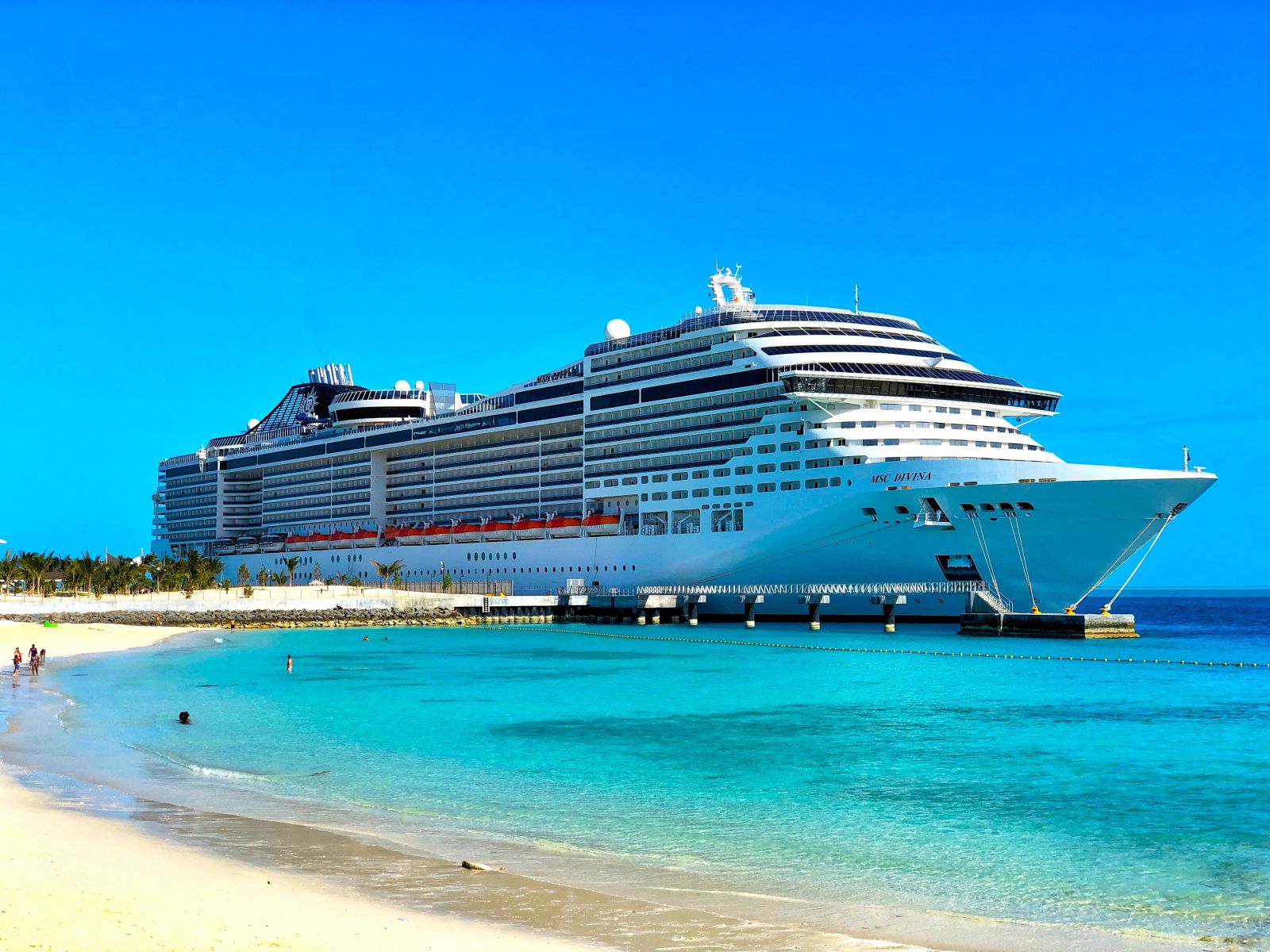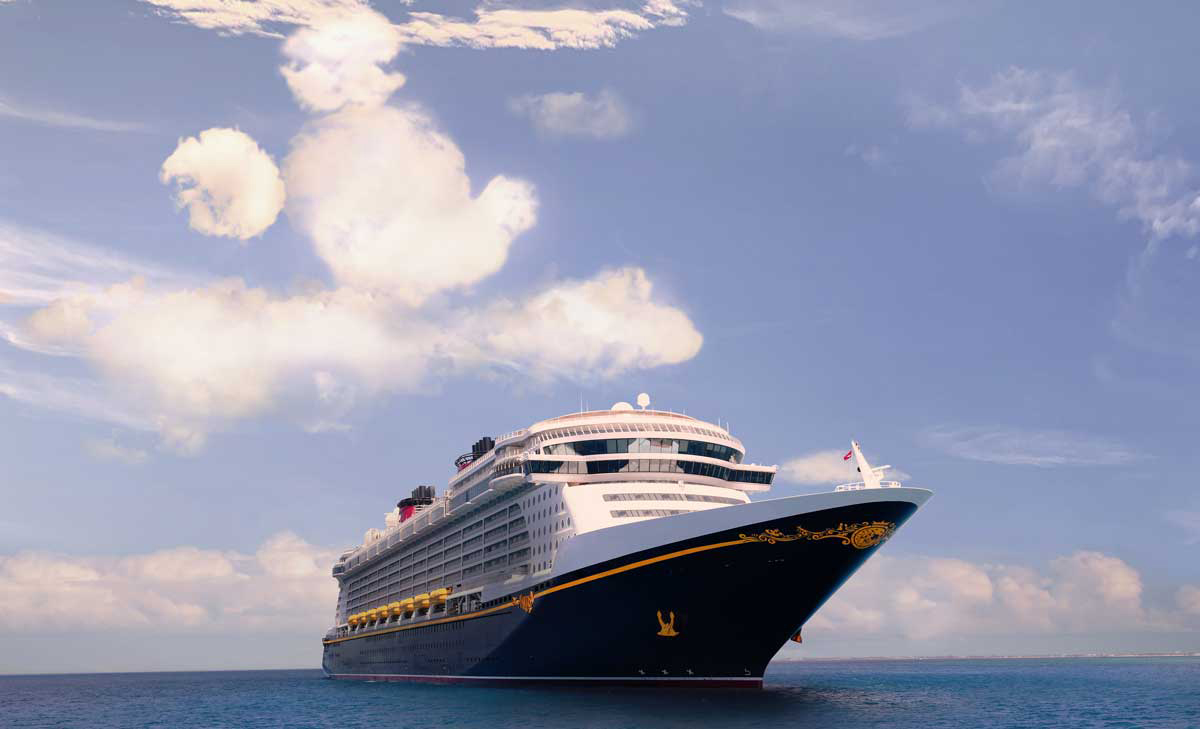

Finance
How To Invest In Cruise Line Stocks
Published: January 19, 2024
Discover the secrets of investing in cruise line stocks and boost your finance portfolio. Start making profitable moves with our expert guide today!
(Many of the links in this article redirect to a specific reviewed product. Your purchase of these products through affiliate links helps to generate commission for LiveWell, at no extra cost. Learn more)
Table of Contents
- Introduction
- Understanding Cruise Line Stocks
- Researching Cruise Line Companies
- Analyzing Financials and Performance
- Evaluating Industry Trends
- Assessing Market Conditions
- Choosing the Right Cruise Line Stocks to Invest in
- Implementing an Investment Strategy
- Managing and Monitoring Your Investments
- Risks and Considerations in Investing in Cruise Line Stocks
- Conclusion
Introduction
Investing in the stock market can be an excellent way to grow your wealth and secure a brighter financial future. While there are countless investment opportunities available, one sector that has captured the attention of many investors is the cruise line industry. Cruise line stocks offer the potential for significant returns, as well as the opportunity to invest in a growing and globally recognized industry.
In recent years, the cruise line industry has experienced a boom in popularity, with millions of people choosing to embark on luxurious voyages across the seas. This surge in demand has translated into impressive financial performance for many cruise line companies, making them attractive investment options for individuals looking to diversify their portfolios.
However, investing in cruise line stocks requires careful consideration and analysis. It is essential to understand the intricacies of the industry, conduct thorough research on individual cruise line companies, and evaluate various factors that can impact their stock performance.
In this article, we will guide you through the process of investing in cruise line stocks. We will explore the steps you need to take to research and analyze cruise line companies, understand industry trends, and make informed investment decisions. Whether you are a seasoned investor or a beginner looking to enter the financial market, this article will provide you with the knowledge and tools to navigate the world of cruise line stock investments.
Before diving into the details, it is important to note that investing in the stock market is inherently risky. The value of stocks can fluctuate significantly, and past performance is not indicative of future results. Therefore, it is recommended to consult with a financial advisor or investment professional before making any investment decisions.
Understanding Cruise Line Stocks
Before investing in cruise line stocks, it is crucial to have a clear understanding of what they are and how they operate. Cruise line stocks represent shares of ownership in companies that operate cruise ships and provide travel and tourism services. These stocks are traded on the stock market, allowing investors to buy and sell them in order to potentially earn a return on their investment.
Cruise line companies generate revenue from various sources, including ticket sales, onboard activities, accommodations, and the sale of merchandise and services during the cruise. These companies compete in a highly competitive global market, striving to attract and retain passengers by offering unique itineraries, exceptional service, and memorable experiences.
When investing in cruise line stocks, it is important to consider the overall health and performance of the cruise industry. Factors such as consumer demand, economic conditions, geopolitical events, and environmental considerations can all impact the profitability and growth potential of cruise line companies.
It is also important to note that investing in cruise line stocks comes with its own set of risks and challenges. The industry is susceptible to various external factors, including natural disasters, public health concerns, regulatory changes, and changes in consumer preferences. Therefore, it is essential to conduct thorough research and analysis before making any investment decisions.
Furthermore, it is crucial to diversify your investment portfolio. While cruise line stocks can offer potential returns, it is always wise to spread your investments across different sectors and industries to mitigate risk.
As with any investment, it is essential to stay informed and keep track of the latest news and developments in the cruise line industry. This will help you make informed decisions and adjust your investment strategy if necessary.
In the next sections, we will explore the steps involved in researching and analyzing cruise line companies, evaluating industry trends, and ultimately choosing the right cruise line stocks to invest in. By following these steps, you can enhance your chances of making sound investment decisions and potentially reap the benefits of investing in this exciting industry.
Researching Cruise Line Companies
When considering investing in cruise line stocks, conducting thorough research on the different cruise line companies is crucial. This research will help you gain insights into the financial health, performance, and future prospects of each company, allowing you to make informed investment decisions.
Here are some key factors to consider when researching cruise line companies:
- Company Background: Start by understanding the background and history of each cruise line company. Look into their founding date, management team, and overall reputation in the industry. A well-established and reputable company may offer more stability for your investment.
- Financial Statements: Analyze the financial statements of each company, including their income statement, balance sheet, and cash flow statement. Pay attention to key financial indicators such as revenue growth, profit margins, debt levels, and cash flow. This will give you a comprehensive view of the company’s financial health and performance.
- Market Position: Assess the market position of each cruise line company. Consider factors such as the number and size of their ships, their market share, and their geographic reach. A company with a strong market position may have a competitive advantage and be better positioned for growth.
- Customer Satisfaction and Reviews: Look into customer satisfaction ratings and reviews for each cruise line company. Positive feedback and high customer satisfaction can indicate a strong demand for the company’s services and a loyal customer base.
- Competitive Landscape: Understand the competitive landscape of the cruise line industry. Research other major players in the industry and assess their strengths and weaknesses. This will help you understand how each company stacks up against its competitors and identify any unique selling points or advantages.
- Industry Trends: Stay up to date with the latest industry trends and developments. Consider factors such as changing consumer preferences, emerging markets, technological advancements, and regulatory changes. A company that is proactive in adapting to industry trends may have better growth potential.
- Analyst Ratings and Recommendations: Review analyst ratings and recommendations for each cruise line company. Analysts often provide insights and forecasts regarding a company’s future performance. However, it is important to consider multiple analyst opinions and not rely solely on one source.
By thoroughly researching cruise line companies, you can gain a deeper understanding of their financials, market position, and growth potential. This knowledge will form the foundation for your investment decisions and help you choose the right cruise line stocks to invest in. Remember to compare multiple companies and consider their unique strengths and weaknesses before making a final decision.
Analyzing Financials and Performance
When investing in cruise line stocks, analyzing the financials and performance of the companies is essential. This analysis will provide insights into the profitability, stability, and growth potential of each company, enabling you to make informed investment decisions.
Here are some key aspects to consider when analyzing the financials and performance of cruise line companies:
- Revenue and Profitability: Review the company’s revenue and profitability trends over the past few years. Look for consistent revenue growth and improving profit margins. Assess whether the company’s revenue is primarily driven by ticket sales or if it has diversified revenue streams.
- Operating Costs and Efficiency: Analyze the company’s operating costs, including fuel expenses, labor costs, and marketing expenses. A company with efficient operations and low costs may be better positioned to withstand economic downturns and generate higher profits.
- Debt Levels and Financial Stability: Assess the company’s debt levels and financial stability. Too much debt can pose risks and hinder growth opportunities. Analyze the company’s debt-to-equity ratio and interest coverage ratio to gauge its ability to manage its debt obligations.
- Return on Investment (ROI): Evaluate the company’s return on investment over the past few years. A higher ROI indicates that the company is generating strong returns for its investors.
- Cash Flow: Examine the company’s cash flow statement to assess its ability to generate and manage cash. Positive and consistent cash flow is crucial for covering operating expenses, debt payments, and funding growth initiatives.
- Dividends and Share Repurchases: Consider whether the company pays dividends to its shareholders or engages in share repurchases. Dividends can provide a regular income stream, while share repurchases indicate that the company believes its stock is undervalued.
- Future Growth Prospects: Look into the company’s future growth prospects. Consider factors such as new ship orders, expansion plans, and market demand for cruise travel. A company with a solid growth strategy may offer better long-term investment opportunities.
Additionally, compare the financial performance of multiple cruise line companies to identify the top performers in the industry. Consider their relative strengths in terms of revenue growth, profit margins, and return on investment. This analysis will help you make informed decisions about which cruise line stocks to invest in.
However, it is important to remember that historical performance does not guarantee future results. Stay updated with the latest financial reports and market updates to monitor the ongoing performance of the cruise line companies you’ve invested in.
By analyzing the financials and performance of cruise line companies, you can gain valuable insights into their growth potential and financial stability. This analysis will aid in making informed investment decisions and increasing the likelihood of achieving favorable returns on your investment.
Evaluating Industry Trends
When investing in cruise line stocks, it is crucial to evaluate industry trends to understand the current landscape and anticipate future opportunities and challenges. By staying informed about industry trends, you can make more informed investment decisions and adjust your strategy accordingly.
Here are some key industry trends to consider when evaluating cruise line stocks:
- Global Demographic Shifts: Take into account global demographic shifts, such as an aging population or an emerging middle class in developing countries. These shifts can significantly impact the demand for cruise travel and influence the financial performance of cruise line companies.
- Environmental Considerations: Consider the growing awareness and importance of environmental sustainability in the cruise industry. Evaluate how cruise line companies are adapting to stricter environmental regulations, investing in cleaner technologies, and promoting responsible travel practices. Companies that prioritize sustainability may be better positioned for long-term success.
- Destination Popularity and Demand: Assess the popularity and demand for different cruise destinations. Consumer preferences can change over time, and certain destinations may experience increased interest due to cultural events, natural attractions, or improved infrastructure. Understanding destination trends can help identify companies that operate in high-demand areas.
- Technological Advancements: Explore the impact of technology on the cruise industry. Consider how companies are utilizing technology to enhance the guest experience, streamline operations, and improve safety measures. Stay informed about emerging technologies, such as artificial intelligence, virtual reality, and automation, and assess how companies are incorporating these innovations into their business models.
- Health and Safety Measures: Evaluate how cruise line companies adapt to health and safety concerns, especially in the aftermath of global pandemics or outbreaks. Industry trends may focus on implementing stricter health protocols, enhancing sanitation practices, and improving medical facilities onboard. Understanding a company’s commitment to passenger safety can provide insights into its resilience in challenging times.
- Economic Conditions: Monitor economic conditions and their impact on the cruise industry. Economic downturns can affect consumer discretionary spending and may lead to changes in travel behavior. Evaluate how cruise line companies are managing economic challenges and their strategies for driving growth during both favorable and unfavorable economic cycles.
Furthermore, it is important to stay updated with industry news, reports, and expert analyses. Subscribe to industry publications, follow relevant social media accounts, and participate in investor forums to gain insights from industry experts and fellow investors.
Evaluating industry trends allows you to gain a broader perspective on the cruise line industry and identify potential investment opportunities. By understanding market dynamics, shifting consumer preferences, and emerging technologies, you can make more informed decisions and adapt your investment strategy to maximize returns.
Assessing Market Conditions
When investing in cruise line stocks, it is important to assess the overall market conditions to better understand the potential risks and opportunities that may impact your investments. Evaluating market conditions allows you to make informed decisions and adjust your investment strategy accordingly.
Here are a few key factors to consider when assessing market conditions for cruise line stocks:
- Overall Market Sentiment: Pay attention to the general sentiment in the stock market. Market sentiment can influence investor behavior and impact the performance of individual stocks and sectors. Assess whether market conditions are favorable, neutral, or bearish, as this can affect the performance of cruise line stocks.
- Macroeconomic Factors: Keep an eye on macroeconomic factors that can impact the cruise industry and the financial markets as a whole. Factors such as interest rates, inflation, GDP growth, and consumer confidence can influence consumer spending habits and travel preferences.
- Regulatory Environment: Evaluate the regulatory environment specific to the cruise line industry. Changes in regulations and policies related to safety standards, environmental concerns, and health and sanitation protocols can have a significant impact on cruise line companies. Stay informed about any regulatory updates that may affect the industry’s operations and profitability.
- Competitive Landscape: Analyze the competitive landscape within the cruise industry. Assess the market share of major cruise line companies and their strategies for gaining a competitive edge. Consider how market conditions may favor certain companies over others and anticipate any potential disruptions or opportunities in the industry.
- Geopolitical Factors: Stay updated on geopolitical events that could impact the cruise industry, such as changes in trade policies, political instability, or travel restrictions. Geopolitical factors can influence international travel patterns and affect the demand for cruise vacations in specific regions.
- Industry News and Events: Keep abreast of industry news, events, and developments. Stay connected with cruise industry associations, attend conferences, and follow market analysts and experts for insights into the latest trends, mergers, acquisitions, and innovations in the industry.
It is important to note that market conditions are ever-changing, and it is virtually impossible to predict them with complete accuracy. However, by monitoring market conditions and staying informed about relevant factors, you can better position yourself to make informed investment decisions.
Remember to diversify your portfolio and maintain a long-term investment perspective. By spreading your investments across different sectors and asset classes, you can mitigate risk and position yourself for potential growth.
Assessing market conditions enables you to adapt your investment strategy to changing trends and dynamics. By understanding the broader market environment, you can make informed decisions about when to buy, sell, or hold cruise line stocks and optimize your investment returns.
Choosing the Right Cruise Line Stocks to Invest in
Choosing the right cruise line stocks to invest in is a critical step in your investment journey. With numerous options available, it is important to carefully evaluate each company and consider key factors that align with your investment goals and risk tolerance.
Here are some factors to consider when choosing cruise line stocks to invest in:
- Financial Performance: Assess the financial performance of each cruise line company. Look for companies with consistent revenue growth, strong profit margins, and efficient cost management. Analyze their financial statements, including income statements, balance sheets, and cash flow statements.
- Market Position and Competitive Advantage: Evaluate each company’s market position within the cruise line industry. Consider factors such as the size and number of their ships, brand recognition, loyal customer base, and unique selling points. Look for companies that have a competitive advantage or are well-positioned for growth.
- Growth Prospects: Assess the growth prospects of the cruise line companies you are considering. Look at their expansion plans, new ship orders, and potential market opportunities. Consider industry trends, demographic shifts, and emerging markets to identify companies with strong growth potential.
- Management Team: Research and evaluate the management team of each cruise line company. Look for executives with industry expertise, a track record of success, and a clear vision for the company’s future. A strong management team can make a significant impact on a company’s performance and growth.
- Dividends and Shareholder Benefits: Consider whether a company pays dividends to its shareholders. Dividends can provide a regular income stream and indicate that a company is financially stable and generating consistent profits. Additionally, some companies may offer shareholder benefits, such as discounted or exclusive cruise packages.
- Risk Factors: Evaluate the risk factors associated with each cruise line company. Consider factors such as regulatory risks, geopolitical risks, and industry-specific risks, such as natural disasters or public health crises. It is important to be aware of the risks involved and assess whether you are comfortable with them.
- Valuation: Assess the valuation of each company’s stock. Compare key valuation metrics, such as price-to-earnings ratio (P/E ratio) and price-to-sales ratio (P/S ratio), to similar companies in the industry. Consider whether the stock is undervalued or overvalued based on its growth prospects and financial performance.
It is recommended to diversify your portfolio by investing in multiple cruise line stocks. This helps spread the risk and allows you to benefit from the potential growth of different companies within the industry.
In addition to conducting your own research, consider seeking advice from financial professionals or consulting with a qualified investment advisor. They can provide valuable insights and help ensure your investment decisions align with your financial goals and risk tolerance.
Remember that investing in the stock market carries risks, and past performance is not indicative of future results. Regularly monitor your investments and stay updated with industry news and trends to make informed decisions and adjust your portfolio as needed.
By carefully evaluating each company and considering these factors, you can choose the right cruise line stocks to invest in and position yourself for potential returns in the dynamic cruise line industry.
Implementing an Investment Strategy
Once you have chosen the right cruise line stocks to invest in, it is important to develop and implement an investment strategy to guide your decision-making process. An investment strategy helps you stay focused, disciplined, and aligned with your financial goals.
Here are some steps to consider when implementing your investment strategy for cruise line stocks:
- Establish Your Financial Goals: Define your financial goals and investment objectives. Are you investing for long-term growth or seeking regular income? Do you have a specific target return in mind? Understanding your goals will help shape your investment strategy.
- Define Your Risk Tolerance: Assess your risk tolerance before investing. Understand how much risk you are willing to take and how it aligns with your financial goals. The cruise line industry can be subject to various risks, so ensure that your investment strategy is in line with your risk tolerance.
- Diversify Your Portfolio: Diversification is key to managing risk. Consider allocating your investment across cruise line companies, as well as other sectors and asset classes. This helps to mitigate the impact of any potential downturns in the cruise industry and increase the overall stability of your portfolio.
- Consider Dollar-Cost Averaging: Dollar-cost averaging involves investing a fixed amount of money at regular intervals, regardless of stock prices. This strategy can help mitigate the impact of market volatility and allow you to accumulate more shares when prices are low.
- Monitor and Rebalance: Regularly monitor the performance of your cruise line stocks and review your investment strategy. Market conditions and individual stock performance can change over time, so it’s important to reassess your portfolio periodically and rebalance if necessary.
- Stay Informed: Stay updated with the latest news, trends, and developments in the cruise line industry. Follow industry publications, attend conferences, and stay connected with financial news sources. An informed investor is better equipped to make timely and informed decisions.
- Control Your Emotions: Investing can be emotional, especially during times of market volatility. Avoid making impulsive decisions based on short-term market fluctuations. Stick to your long-term investment strategy and don’t let fear or greed drive your decisions.
- Consider Professional Advice: If you are new to investing or unsure about your investment strategy, consider seeking advice from a qualified financial advisor. They can provide personalized guidance based on your financial situation, goals, and risk tolerance.
Remember that the cruise line industry, like any investment, carries risks. It is essential to conduct your own research, diversify your portfolio, and invest with a long-term perspective. Additionally, regularly assess your investment strategy and make adjustments based on changes in your financial goals or market conditions.
By implementing a well-thought-out investment strategy and staying disciplined, you can navigate the cruise line industry and potentially achieve your financial objectives.
Managing and Monitoring Your Investments
Managing and monitoring your investments in cruise line stocks is crucial to ensuring that your portfolio remains on track with your financial goals. By actively overseeing your investments, you can make informed decisions and take appropriate actions based on market conditions and the performance of individual stocks.
Here are some key steps to effectively manage and monitor your investments in cruise line stocks:
- Regularly Review Your Portfolio: Set a schedule to review your portfolio at regular intervals. Assess the performance of your cruise line stocks and compare them to your investment objectives. Look for any significant changes or trends that may require adjustments to your investment strategy.
- Stay Informed: Continuously stay updated on industry news, trends, and market conditions. Follow industry publications, financial news sources, and relevant websites to track the latest developments in the cruise line industry. This information will help you make informed decisions and adapt your strategy as needed.
- Monitor Financial Reports: Pay attention to the financial reports and earnings releases of the cruise line companies you have invested in. Analyze key financial metrics, such as revenue growth, profit margins, and cash flow, to evaluate their ongoing performance and stability. Look for any changes or trends that may impact the future prospects of those companies.
- Set Realistic Expectations: Keep your expectations realistic when it comes to investment returns. The cruise line industry, like any investment, can experience periods of volatility and uncertainty. Avoid making impulsive decisions based on short-term market fluctuations and focus on your long-term investment goals.
- Rebalance Your Portfolio: Periodically review your portfolio’s asset allocation and rebalance if necessary. Changes in market conditions or the performance of individual stocks can cause your portfolio to deviate from your desired allocation. Rebalancing helps ensure that your investments remain in line with your risk tolerance and long-term objectives.
- Consider Tax Implications: Be mindful of the tax implications of your investments. Capital gains taxes may apply when you sell stocks for a profit. Consult with a tax professional to understand the tax implications and optimize your investments from a tax perspective.
- Regularly Assess Risk: Continuously assess the risks associated with your investments. Monitor any changes in regulations, economic conditions, or other factors that may impact the cruise line industry. Stay aware of industry-specific risks, such as natural disasters or health-related emergencies, and adjust your investment decisions accordingly.
- Stay Disciplined: Stick to your investment strategy and avoid emotional decision-making. Market fluctuations and short-term volatility may tempt you to make knee-jerk reactions. Instead, focus on your long-term goals, and make informed decisions based on careful analysis and research.
It is important to note that past performance is not indicative of future results. Therefore, it is necessary to continuously monitor and adapt your investment strategy as market conditions and trends evolve.
If you are unsure about managing your investments on your own, consider seeking guidance from a qualified financial advisor. They can provide professional advice tailored to your specific investment needs and help ensure that your portfolio remains aligned with your financial goals.
By actively managing and monitoring your investments in cruise line stocks, you can make informed decisions, mitigate risks, and maximize the potential returns of your investment portfolio.
Risks and Considerations in Investing in Cruise Line Stocks
Investing in cruise line stocks can offer the potential for substantial returns, but it is important to recognize and evaluate the risks involved. Understanding these risks and considerations can help you make more informed investment decisions and manage your portfolio effectively.
Here are some key risks and considerations to keep in mind when investing in cruise line stocks:
- Market Volatility: The cruise line industry can be subject to significant market volatility. Economic downturns, geopolitical events, and public health crises can lead to fluctuating stock prices and overall market uncertainty. Be prepared for short-term price fluctuations and maintain a long-term investment perspective.
- Regulatory and Environmental Risks: The cruise line industry is subject to various regulations and environmental considerations. Changes in safety standards, health protocols, and environmental regulations can impact operating costs and result in additional compliance requirements. Stay informed about regulatory developments and assess the potential impact on cruise line companies.
- Geopolitical and Global Events: Geopolitical events, such as political instability, terrorism threats, or trade disputes, can impact the cruise industry. Additionally, global events like natural disasters, pandemic outbreaks, or weather-related disruptions can negatively affect cruise operations and passenger demand. Evaluate the potential risks associated with such events and be prepared for their potential impact on the industry.
- Consumer Confidence and Economic Factors: Cruise line stocks can be influenced by consumer confidence and economic conditions. During economic downturns or periods of reduced consumer spending, demand for luxury travel, including cruising, may decrease. Consider the potential impact of economic factors on the demand for cruise vacations and the financial performance of cruise line companies.
- Competition and Market Share: The cruise line industry is highly competitive. Companies compete for market share, pricing, and providing unique experiences. Changing consumer preferences and the entry of new players can impact market dynamics and company performance. Evaluate the competitive landscape and assess the ability of cruise line companies to maintain or grow their market share.
- Health and Safety Concerns: Health and safety concerns are significant risks in the cruise industry. Outbreaks of infectious diseases, such as the COVID-19 pandemic, can lead to cruise cancellations, travel restrictions, and adverse impacts on the financial performance of cruise line companies. Stay informed about health and safety measures implemented by companies to prevent and manage such risks.
- Debt Levels and Financial Stability: Assess the debt levels and financial stability of cruise line companies. Excessive debt can limit their ability to invest in growth initiatives and withstand economic downturns. Evaluate debt-to-equity ratios and interest coverage ratios to determine the financial strength and stability of potential investment options.
- Operational Risks: Cruise line companies face operational risks, such as mechanical failures, accidents, or natural disasters. These events can result in reputational damage, financial losses, and potential legal liabilities. Evaluate the company’s operational history, safety records, and crisis management strategies to assess their ability to mitigate operational risks.
It is important to carefully consider these risks and conduct thorough research before investing in cruise line stocks. Diversifying your portfolio, staying informed about industry trends, and regularly assessing the performance of your investments can help manage these risks effectively.
Remember, investing in the stock market always carries some level of risk. It is recommended to consult a qualified financial advisor or investment professional who can provide personalized guidance based on your specific financial situation and risk tolerance.
By being aware of the risks and considerations involved in investing in cruise line stocks, you can make informed decisions and navigate the market more effectively.
Conclusion
Investing in cruise line stocks can offer exciting opportunities for growth and potential returns. By following a thoughtful and informed approach, you can navigate the complexities of the cruise line industry and make sound investment decisions aligned with your financial goals.
Throughout this article, we have explored various aspects of investing in cruise line stocks. We started by understanding cruise line stocks and the dynamics of the industry. We then discussed the importance of researching and analyzing cruise line companies, evaluating industry trends, and assessing market conditions. These steps provide a solid foundation for selecting the right cruise line stocks to invest in.
Implementing and managing your investment strategy is a crucial aspect of successful investing. By staying disciplined, regularly monitoring your investments, and adjusting your strategy when needed, you can navigate market fluctuations and optimize your chances of achieving desired returns.
It’s crucial to acknowledge the risks and considerations involved in investing in cruise line stocks. The industry is susceptible to various external factors, such as economic conditions, regulatory changes, and health and safety concerns. By being well-informed and assessing these risks, you can take appropriate measures to mitigate potential downsides and make informed investment decisions.
Remember, investing in the stock market always carries a level of risk, and past performance is not indicative of future results. It is advisable to consult with a financial advisor or investment professional to tailor your investment strategy to your unique circumstances and risk tolerance.
With proper research, analysis, and diligent monitoring, investing in cruise line stocks can be a rewarding venture. Stay informed, adapt to changing market conditions, and maintain a long-term perspective. By doing so, you can potentially generate attractive returns and participate in the growth of this ever-evolving industry.














